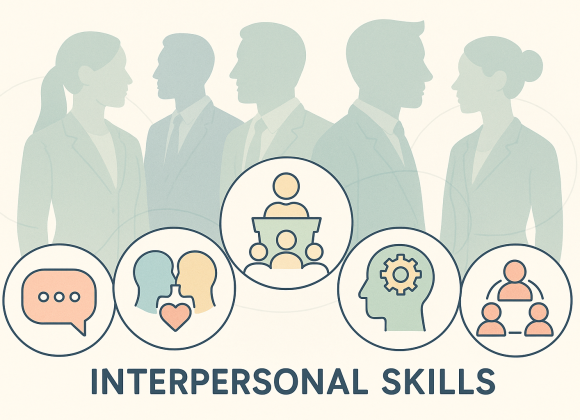Your resume is your personal marketing pitch—it decides whether you get your foot in the door or stay in the pile. Yet, a staggering 75% of resumes are rejected before they reach a human recruiter, often because they fail to meet basic screening requirements.
In a world where recruiters are skimming through hundreds of resumes in minutes, the smallest misstep can cost you the interview. Whether you’re a fresh graduate or a seasoned professional, it’s time to audit your resume for the most common rejection triggers.
Let’s dive into the six major reasons resumes get rejected, and how you can correct each one to increase your chances of making it to the shortlist.
1. Poor Formatting and Visual Layout
Why It’s a Problem:
First impressions matter. If your resume looks like a wall of text, is hard to scan, or lacks visual hierarchy, recruiters might skip it—no matter how qualified you are. According to CareerBuilder, 38% of hiring managers discard resumes with unattractive layouts.
Common Mistakes:
- Too many fonts or font sizes
- No white space (hard to read)
- Lack of clear section headings
- Using tables or graphics that confuse Applicant Tracking Systems (ATS)
How to Fix It:
- Use clean, professional fonts like Calibri, Arial, or Times New Roman (11–12 pt).
- Stick to one font type throughout the resume.
- Include clear headings (e.g., Work Experience, Education, Skills).
- Use bullet points to break down achievements and tasks.
Pro Tip: Use resume builders like Zety, Novoresume, or Canva Resume Templates that are designed for both humans and ATS.
2. One-Size-Fits-All Approach
Why It’s a Problem:
Recruiters can spot a generic resume instantly. If your resume doesn’t address the specific job’s needs, it sends the message that you’re not invested in the role.
Common Mistakes:
- Not aligning your experience with the job description
- Sending the same resume to multiple roles
- Leaving out relevant keywords
How to Fix It:
- Customize your resume for each job by carefully reading the job description and reflecting keywords in your skills and experiences.
- Use a summary statement that is role-specific, e.g.: “Results-driven Digital Marketer with 5+ years of experience in SEO, Google Ads, and content strategy, seeking to boost lead generation at XYZ Ltd.”
- Match your experience to the job responsibilities using action verbs and quantifiable results.
Tool Suggestion: Use Jobscan to compare your resume to the job description and increase your match score.
3. Lack of Results and Measurable Achievements
Why It’s a Problem:
Employers care less about what you were “responsible for” and more about what you accomplished. Generic job descriptions don’t showcase impact.
Common Mistakes:
- Vague statements like “Managed a team”
- No numbers or outcomes
- Describing tasks rather than achievements
How to Fix It:
Transform tasks into quantifiable accomplishments using the STAR Method (Situation, Task, Action, Result). For example:
- ❌ “Handled customer complaints”
- ✅ “Resolved 95% of customer complaints within 24 hours, improving satisfaction scores by 20% in 6 months.”
Structure Tip: Start each bullet point with a strong action verb: Led, Optimized, Delivered, Streamlined, Generated, Reduced, etc.
4. Typos, Grammar Errors, and Poor Language
Why It’s a Problem:
This is a deal-breaker for many recruiters. In fact, 77% of hiring managers say spelling or grammar errors lead to immediate rejection, according to a CareerBuilder survey.
Common Mistakes:
- Spelling mistakes
- Passive language
- Awkward sentence structure
- Inconsistent verb tenses
How to Fix It:
- Use Grammarly or Hemingway Editor to check grammar and readability.
- Print out your resume and read it aloud.
- Ask at least one other person to proofread.
Quick Win: Maintain consistent tense—past tense for old jobs, present tense for your current one.
5. Including Irrelevant or Outdated Information
Why It’s a Problem:
Recruiters are looking for focused, recent, and role-relevant content. Long-winded resumes with irrelevant school awards or outdated skills dilute your key strengths.
Common Mistakes:
- Listing every job you’ve had since college
- Including personal details (marital status, religion)
- Mentioning old skills like MS Paint or Typing Speed
- Adding hobbies unless relevant (e.g., coding side projects for a developer role)
How to Fix It:
- Focus on the last 10–15 years of relevant experience.
- Keep the resume length appropriate (1 page if <10 years experience, 2 pages max).
- List only the skills and tools currently in demand (e.g., Python, Notion, Asana, HubSpot).
Avoid: Using outdated phrases like “Objective: Seeking a challenging position…” — instead, use a summary that adds value.
6. Not Optimized for Applicant Tracking Systems (ATS)
Why It’s a Problem:
Most employers now use ATS to filter resumes. If your resume can’t be read by ATS, it might never even reach a human.
Common Mistakes:
- Using graphics, images, or tables
- Headers/footers with important info
- No keywords
- Saving resume in Word or image formats
How to Fix It:
- Use a plain-text, ATS-friendly layout (no text boxes or visuals).
- Include keywords from the job description—both hard and soft skills.
- Stick to standard headings like “Work Experience”, “Skills”, “Certifications”.
- Save and submit your resume in PDF format unless told otherwise.
Tool Tip: Use Resume Worded to test your resume for ATS compatibility and get real-time feedback.
Conclusion: Craft a Resume That Opens Doors
Getting your resume right is not about luck—it’s about strategy. Most rejections happen not because you’re unqualified, but because your resume fails to highlight your qualifications in the right way.
By avoiding the six major mistakes discussed above, you can dramatically increase your chances of making it past the initial filters and into the interview room.
Final Resume Review Checklist:
- Is it clean, professional, and easy to scan?
- Is it tailored to the job you’re applying for?
- Are your accomplishments measurable?
- Is it free from grammar errors and typos?
- Does it include only recent, relevant information?
- Is it ATS-friendly?
Remember, your resume isn’t just a document—it’s your professional story. Tell it well, and the opportunities will follow.





